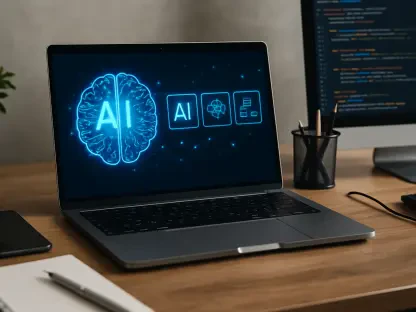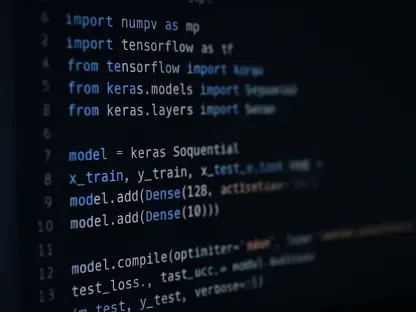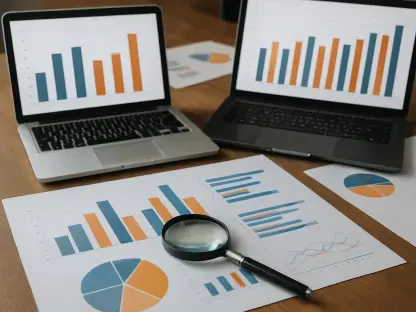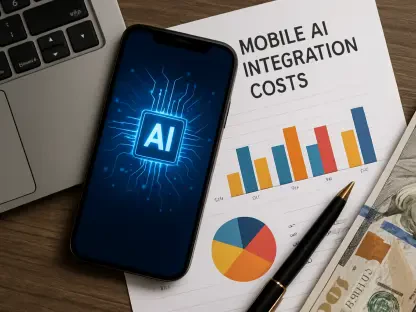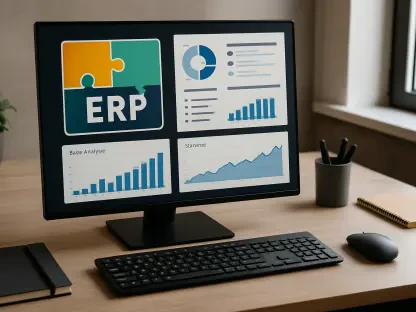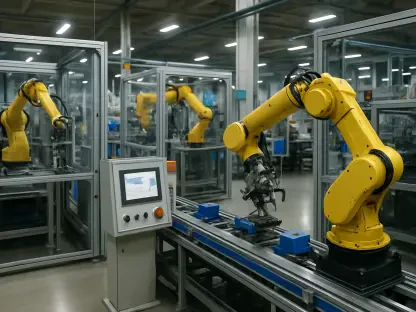In today’s rapidly evolving technological landscape, artificial intelligence and digital twins have emerged as powerful tools transforming business strategies globally. Digital twins, once confined to engineering simulations, now ally with AI, ushering in a new era of efficiency and decision-making. Originating in the engineering world, digital twins were first used to simulate complex physical systems accurately. Now, coupled with AI, they have surpassed their original purpose, enabling comprehensive analyses and predictions across various sectors. This synergy allows businesses to create virtual replicas of real-world systems, facilitating improved predictions, enhanced performance, and strategic innovation. Combining these technologies presents immense opportunities for optimizing processes and expanding capabilities, driving revolutionary shifts in how industries operate and compete. As organizations continue to harness the potential of digital twins and AI, their integration promises to redefine conventional business paradigms and unlock new possibilities.
The Evolution of Digital Twins and AI
Digital twins emerged initially as virtual representations of real-world processes, enabling engineers to predict behaviors and failures in complex systems like CPUs and jet engines. Their traditional roles in simulating these components have advanced dramatically, especially with AI integration. The first digital twin model of a CPU, developed by Karen Panetta at Digital Equipment Corporation, marked a significant shift in understanding complex systems. The modern integration of AI has further broadened the scope, allowing these virtual models to support intricate simulations extending beyond traditional engineering applications.
Today, AI-enhanced digital twins are not only modeling physical objects but also offering interactive simulations providing businesses insights into system behavior under varying conditions. The fusion of AI techniques with digital twins enables real-time data processing, creating dynamic models facilitating more informed decision-making. Businesses employing this combination can leverage continuous learning and adaptation, generating predictive insights that traditional methods cannot match. This advancement is an essential step towards developing systems with autonomous decision-making capabilities, reducing reliance on human intervention and enabling superior operational efficiency.
Key Applications and Industry Impact
The enhanced digital twin technology is drawing significant attention across industries by offering substantial improvements in efficiency and safety. In manufacturing, companies use this technology to optimize production lines, minimizing downtime and mitigating costs associated with equipment failures. Digital twins simulate machinery operations, predicting maintenance requirements before disruptions occur. This proactive approach ensures continuous production flow, optimizing manufacturing processes.
In addition to manufacturing, the energy sector benefits significantly from digital twins and AI. By modeling entire power plants and grids, energy companies can anticipate equipment malfunctions and implement timely interventions, drastically reducing the risk of large-scale outages. The ability to simulate energy demands and optimize grid operations facilitates efficient energy distribution, enhancing sustainability efforts and reducing operational costs.
Furthermore, in the realm of healthcare, digital twins are revolutionizing patient care by creating personalized treatment plans. Medical professionals use these technologies to simulate individual patients’ conditions, predicting potential complications and optimizing treatment protocols. This personalized approach improves patient outcomes and streamlines medical resource allocation.
Cybersecurity and Data Management
Digital twins and AI’s applications extend into the cybersecurity domain, where they are becoming crucial tools for safeguarding data integrity and privacy. Companies create digital replicas of their IT systems and simulate potential cyber threats, enabling them to evaluate various defense strategies without risking critical infrastructure. These simulations allow organizations to anticipate security breaches and implement robust preventive measures, significantly enhancing overall system security.
However, the integration of digital twins into cybersecurity is not without challenges. One major issue is the existence of data silos, which impede the creation of comprehensive models essential for accurate simulations. Breaking down these silos is crucial for digital twins to unify disparate data sources into a cohesive framework. Despite the challenges, successfully integrating and managing data streams presents invaluable opportunities for improving cybersecurity resilience, enabling organizations to adapt swiftly to emerging threats and vulnerabilities. As digital twins facilitate comprehensive data analysis and strategy testing, businesses can enhance security measures, safeguarding their operations from increasing cyber threats.
The Role of AI in Enhancing Digital Twin Efficiency
AI technologies, particularly Large Language Models (LLMs), are essential in optimizing digital twin development and implementation. AI streamlines the complex processes involved, such as modeling, coding, and managing extensive data sets. Generative AI capabilities aid in data compression without losing vital information, enabling businesses to maintain data integrity while processing large volumes efficiently. Such AI-driven advancements enhance the creation of digital twins, ensuring transparent and optimized operations across different business functions.
Moreover, AI transforms how users interact with digital twins by translating complex data outputs into comprehensible insights. Natural language processing (NLP) enhances user experiences by facilitating intuitive data interaction, allowing executives and decision-makers to glean insights from simulations using straightforward language. This improvement significantly reduces the barrier to understanding intricate data sets, making digital twin insights more accessible. The ability to swiftly process complex data and transform it into actionable intelligence underpins the vital role AI plays in advancing digital twin technology.
Case Studies and Real-World Implementations
Numerous real-world applications of AI-empowered digital twins illustrate their potential to revolutionize diverse industries. For instance, in Oregon’s 4J School District, the deployment of the Marvis Minis digital twin, integrated with Mist AI, demonstrates how these technologies can manage extensive digital infrastructure. By predicting network issues and facilitating immediate interventions, the district can efficiently manage a vast network supporting thousands of students and devices. The deployment democratizes tech support, removing the need for advanced technical skills while ensuring seamless educational operations.
On a broader scale, businesses use AI-powered digital twins to simulate human behavior, refining marketing strategies. By creating digital avatars to model customer interactions, companies can predict consumer preferences, refining target marketing campaigns individually. These virtual transactions allow for pre-launch assessments of product responses, ensuring market strategies are tailored to consumer needs.
The New Frontier in Business Strategies
Digital twins and AI introduce game-changing strategies in business operations, transforming how enterprises manage processes and engage with customers. This integration offers organizations a coherent, detailed understanding of business operations, bridging gaps left by conventional process analyses. For example, AI-driven digital twins provide insights into supply chains, enhancing transparency and efficiency by enabling firms to streamline operations and optimize supply networks.
Furthermore, the rise of digital twins disrupts notions of business operations, allowing simulations of entire processes for detailed understanding. This transformation enables companies to test and refine operational practices before executing them, reducing risks associated with implementation. In embracing these technologies, businesses capitalize on improved insights, adopting evidence-based approaches to strategic planning and execution.
Future Considerations and Ethical Dimensions
Looking ahead, the increasing sophistication of digital twins promises to replicate cognitive processes and entire business models, empowering companies to innovate responsibly. This technological progress supports safe experimentation of strategies, allowing firms to test market strategies virtually, mitigating risks tied to direct real-world applications. McKinsey’s insights highlight the potential of Fortune 1000 companies to rely heavily on these technologies to understand and predict market dynamics thoroughly.
The ongoing reliance on digital twins and AI introduces ethical complexities surrounding data privacy, security, and stakeholder engagement. Organizations must work vigilantly toward maintaining data integrity, ensuring fair access, and adopting transparent methodologies for data handling. The promise of advanced, data-driven decision-making must coexist with ethical considerations to ensure responsible deployment. The transformative potential of digital twins, coupled with AI’s analytical prowess, ushers businesses toward an era characterized by more informed and strategic decision-making, laying the groundwork for innovative, responsible progress.


